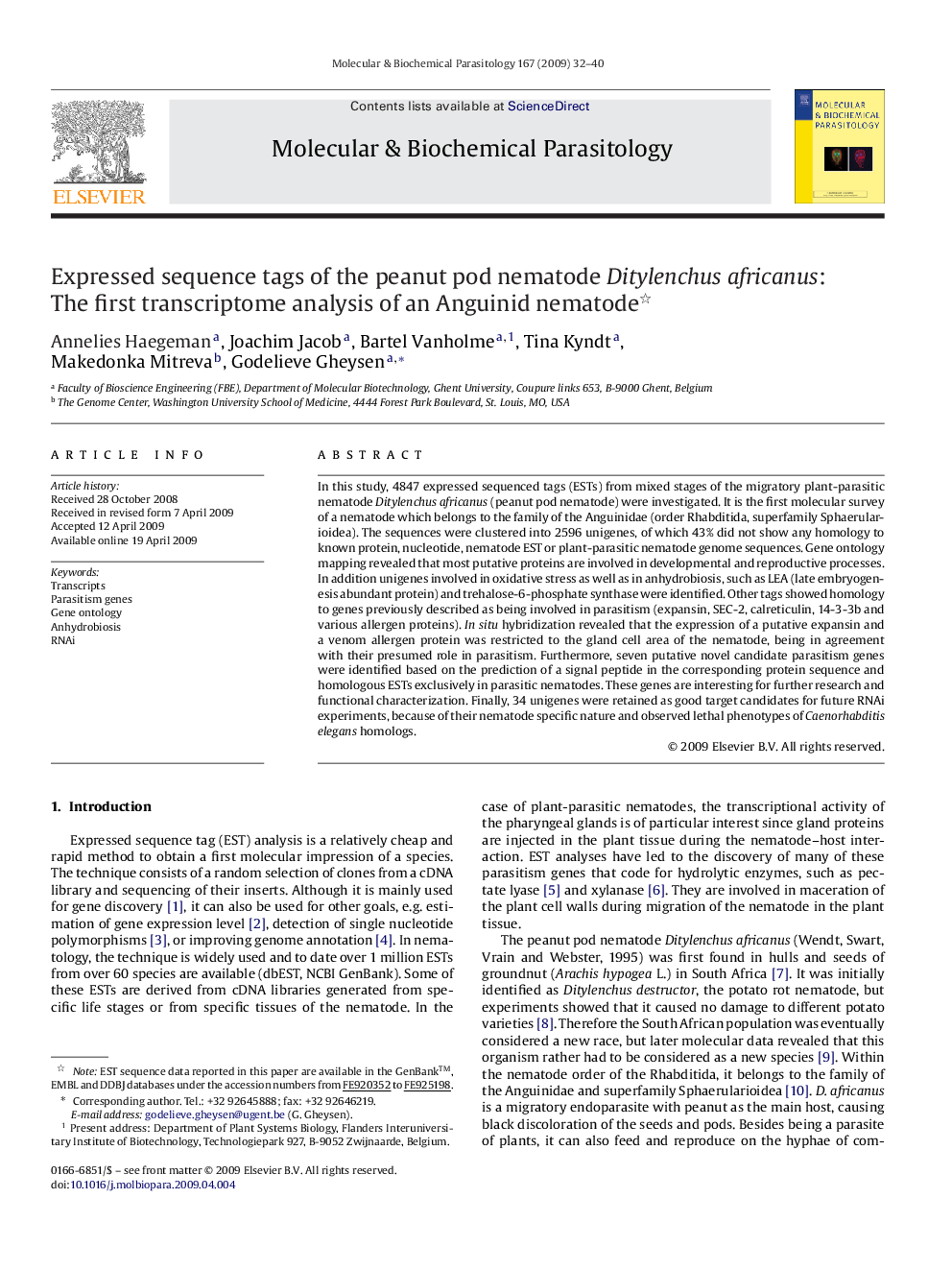| Article ID | Journal | Published Year | Pages | File Type |
|---|---|---|---|---|
| 5915977 | Molecular and Biochemical Parasitology | 2009 | 9 Pages |
Abstract
In this study, 4847 expressed sequenced tags (ESTs) from mixed stages of the migratory plant-parasitic nematode Ditylenchus africanus (peanut pod nematode) were investigated. It is the first molecular survey of a nematode which belongs to the family of the Anguinidae (order Rhabditida, superfamily Sphaerularioidea). The sequences were clustered into 2596 unigenes, of which 43% did not show any homology to known protein, nucleotide, nematode EST or plant-parasitic nematode genome sequences. Gene ontology mapping revealed that most putative proteins are involved in developmental and reproductive processes. In addition unigenes involved in oxidative stress as well as in anhydrobiosis, such as LEA (late embryogenesis abundant protein) and trehalose-6-phosphate synthase were identified. Other tags showed homology to genes previously described as being involved in parasitism (expansin, SEC-2, calreticulin, 14-3-3b and various allergen proteins). In situ hybridization revealed that the expression of a putative expansin and a venom allergen protein was restricted to the gland cell area of the nematode, being in agreement with their presumed role in parasitism. Furthermore, seven putative novel candidate parasitism genes were identified based on the prediction of a signal peptide in the corresponding protein sequence and homologous ESTs exclusively in parasitic nematodes. These genes are interesting for further research and functional characterization. Finally, 34 unigenes were retained as good target candidates for future RNAi experiments, because of their nematode specific nature and observed lethal phenotypes of Caenorhabditis elegans homologs.
Related Topics
Life Sciences
Biochemistry, Genetics and Molecular Biology
Molecular Biology
Authors
Annelies Haegeman, Joachim Jacob, Bartel Vanholme, Tina Kyndt, Makedonka Mitreva, Godelieve Gheysen,
